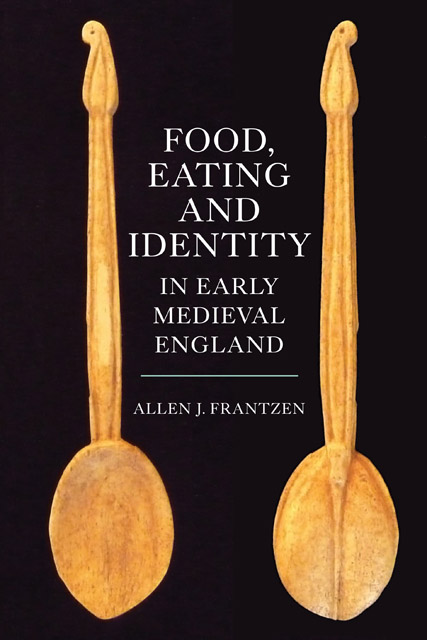4 - The Quernstone
Published online by Cambridge University Press: 14 February 2023
Summary
Most objects essential to food networks – pots for cooking and storage, and iron tools – had to be readily obtainable and easily replaced. Hence they would have been produced in many small settlements and would not appear in long-range trading networks. Among such objects, the quernstone, a hand-mill for grinding grain, is an exception. Although found in nearly every settlement, this implement was not usually produced locally. Most quernstones excavated at Anglo-Saxon sites came from the Rhine Valley, although some were quarried in England. Imported quernstones had penetrated the hinterlands already in the ninth century. Quernstones were large objects, approximately fifteen to sixteen inches wide, and between three and four inches thick. Querns usually survive as fragments, but the site in York known as Fishergate 46–54 yielded the rare find of both parts of one sandstone quern. Both parts are illustrated in Figure 4. The two stones measure 400–420 mm across, with holes in the top stone for two handles and a perforation with a flange or rim on the upper side, the funnel through which grain was poured. The lower stone had a finer grain and a convex surface, matching the concave surface of the top stone.
Querns and burials
Querns sometimes resurface in mysterious contexts. The most written-about Anglo-Saxon quernstone is a fragment found in a sixth-century grave at Sewerby, East Yorkshire. The grave was shared by two women who were interred separately. One of them, the younger, was given a “richly furnished burial,” facing up in a wooden coffin, something rarely found, with a bronze cauldron near her head and many grave goods (grave 41). Not long after her death, an older woman was buried over her, face down, her contorted body oriented in the opposite direction from that of the woman under her (and from that of most graves in the cemetery). Found on her back was a quernstone fragment (grave 49).
Susan Hirst, who excavated the site, suggests that the upper burial took place while the woman was alive. Lloyd Laing and Jennifer Laing describe the body as “weighed down with a piece of quernstone for grinding grain, no doubt to keep her from climbing out of her grave.”
- Type
- Chapter
- Information
- Food, Eating and Identity in Early Medieval England , pp. 83 - 105Publisher: Boydell & BrewerPrint publication year: 2014

